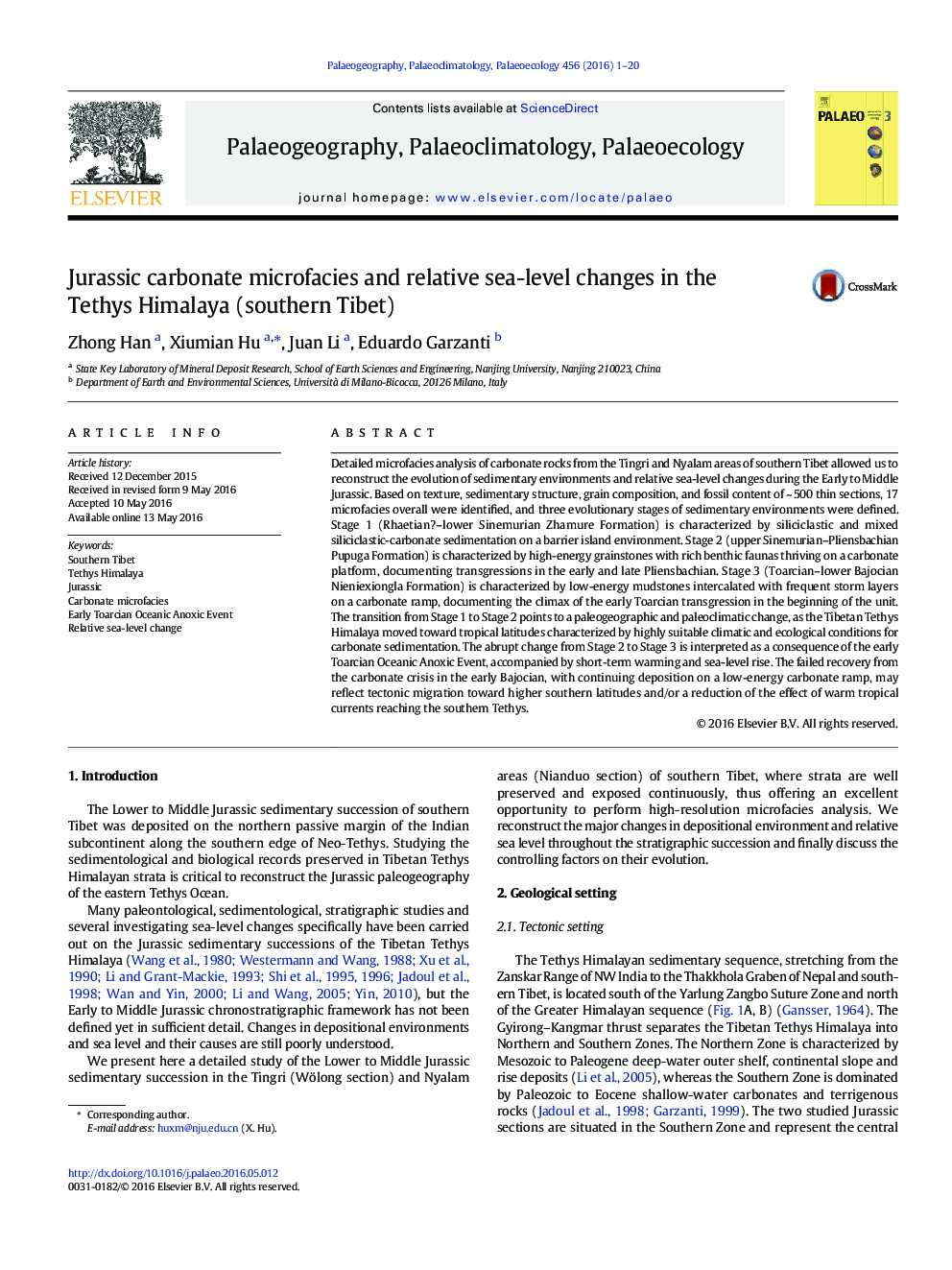| Article ID | Journal | Published Year | Pages | File Type |
|---|---|---|---|---|
| 4465676 | Palaeogeography, Palaeoclimatology, Palaeoecology | 2016 | 20 Pages |
•Jurassic in Tethys Himalaya includes barrier island, platform and ramp facies.•Drowning of the carbonate platform in N India was the consequence of the T-OAE.•Three transgressions (early and late Pliensbachian, Toarcian) happened in N India.
Detailed microfacies analysis of carbonate rocks from the Tingri and Nyalam areas of southern Tibet allowed us to reconstruct the evolution of sedimentary environments and relative sea-level changes during the Early to Middle Jurassic. Based on texture, sedimentary structure, grain composition, and fossil content of ~ 500 thin sections, 17 microfacies overall were identified, and three evolutionary stages of sedimentary environments were defined. Stage 1 (Rhaetian?–lower Sinemurian Zhamure Formation) is characterized by siliciclastic and mixed siliciclastic-carbonate sedimentation on a barrier island environment. Stage 2 (upper Sinemurian–Pliensbachian Pupuga Formation) is characterized by high-energy grainstones with rich benthic faunas thriving on a carbonate platform, documenting transgressions in the early and late Pliensbachian. Stage 3 (Toarcian–lower Bajocian Nieniexiongla Formation) is characterized by low-energy mudstones intercalated with frequent storm layers on a carbonate ramp, documenting the climax of the early Toarcian transgression in the beginning of the unit. The transition from Stage 1 to Stage 2 points to a paleogeographic and paleoclimatic change, as the Tibetan Tethys Himalaya moved toward tropical latitudes characterized by highly suitable climatic and ecological conditions for carbonate sedimentation. The abrupt change from Stage 2 to Stage 3 is interpreted as a consequence of the early Toarcian Oceanic Anoxic Event, accompanied by short-term warming and sea-level rise. The failed recovery from the carbonate crisis in the early Bajocian, with continuing deposition on a low-energy carbonate ramp, may reflect tectonic migration toward higher southern latitudes and/or a reduction of the effect of warm tropical currents reaching the southern Tethys.
